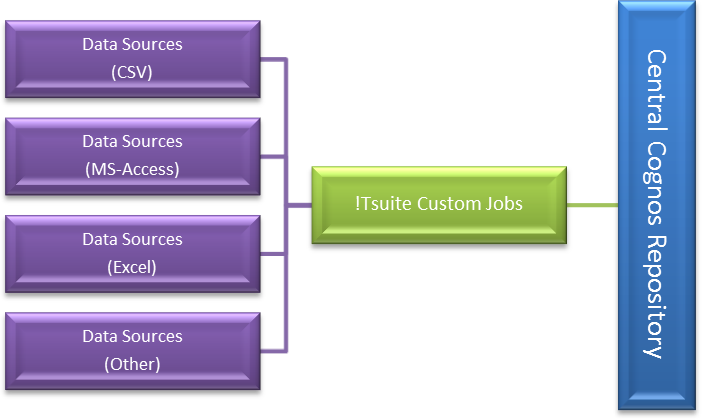
Case Study: Entertainment One |
 |
Preamble
This whitepaper briefly describes a recent project that used !Tsuite to resolve a client challenge encountered in the realm of aggregate reporting on Point-Of-Sale (POS) inventory data.
Client Profile
eOne Entertainment (http://entertainmentone.com) is Canada’s largest distributor of Audio, DVD and Blu-ray titles, as well as a major player in film production and distribution. The company manages remote warehouse inventory for retailers that include Walmart, Target, Shoppers Drug Mart, Loblaw’s, and more.
Client Challenge
The client challenge was represented by the fact that as eOne grew to encompass a wider range of warehousing services the management of POS information became increasing problematic. There was too much human data-conversion effort required to prepare daily POS information coming from multiple sources in different native formats. The only central repository for inventory data was an enormous spreadsheet, and creating timely reports from this foundational data was problematic. As requests for more complex reporting became commonplace the data management personnel were swamped by the effort.
Scope of Solution
The scope of the solution was to consolidate the data from different internal and external sources into a central data repository, leveraging existing infrastructure (the Cognos platform), and making it possible for reporting to be done off the single resultant database structures. This process was intended to eliminate the excessive manual labour required to prepare data from analytical reporting, and to create a framework where weekly retailer reporting could be transitioned to a daily reporting model to impart more accurate reporting.

The simplicity of the solution construct is evident in the process flow, but there were several challenges in the scope of development of the solution:
- The most complex challenge was that the incoming data sources not only differed by source type (CSV, Excel, MS-Access, etc.), but they differed structurally;
- The second challenge was related to the size of data coming in from the external data sources, which could easily reach a million or more rows; and
- The final challenge was to ensure that the myriad number of external sources all correctly triggered automated aggregation.
The Solution
Initially !Tsuite was deployed to create a series of source-specific jobs, engaging Transform as necessary to massage incoming data in a way that allowed it become accessible for aggregation purposes. The Transform functions were vital because the incoming files were often formatted uniquely, and could not be converted successfully to tabular data without transformative actions taken against the source file.
After the information base was successfully established, !Tsuite jobs were modified, extended and further created to aggregate daily POS data into a set of reporting tables, sending data through SQL stored procedures to isolate business logic. The Monitor facility was then configured to watch for incoming source files, triggering the necessary jobs, and so creating a hands-off automated model for importing all incoming POS data to a central repository where reporting could be done more effectively.
Products and Features Used
The product features used for the solution were:
- !Tsuite, using the following components:
o Editor, to create jobs (of multiple types) to fulfil the necessary tasks;
o Transform, to transform incoming data in a way that created a possibility for aggregation;
o Monitor, to watch for source files and launch the jobs as needed;
o Scheduler, to execute jobs on a predefined schedule;
o Launcher, to allow for manual execution of jobs during preparatory solution stages;
o Runner, to execute the jobs as triggered; and
o Watcher, to report on the success of the jobs.
Resulting Client Benefits
eOne was able to take advantage of the solution in several ways:
- Administrative manual labour associated with data preparation was eliminated, reducing information latency and allowing for the automatic daily off-hours processing of a million+ POS records in mere hours;
- The reduction of labour intensity allowed for a smooth transition to daily reporting, improving analytical depth and significantly decreasing the reporting window per retailer from days to hours;
- Better reporting efficiency and scope helped to improve the ability of the executive team to draw upon more graphical and reliable immediate data to make better decisions; and
- Ultimately the improved access to reliable reporting increased eOne’s ability to identify strengths and weaknesses of retail sales on a per-store basis, allowing for better corrective control over operations.
Conclusions
By using !Tsuite, eOne was able to leverage their internal reporting systems (Cognos) without dramatically overburdening their existing IT infrastructure. !Tsuite isolated the processing of incoming POS records and injected the data to a central repository in a repeatable way that eliminates enormous potential for human error. The solution keeps churning daily data from multiple reporting sources into the core reporting system, and vastly improves the value of the resultant information and analytic efficiency.
